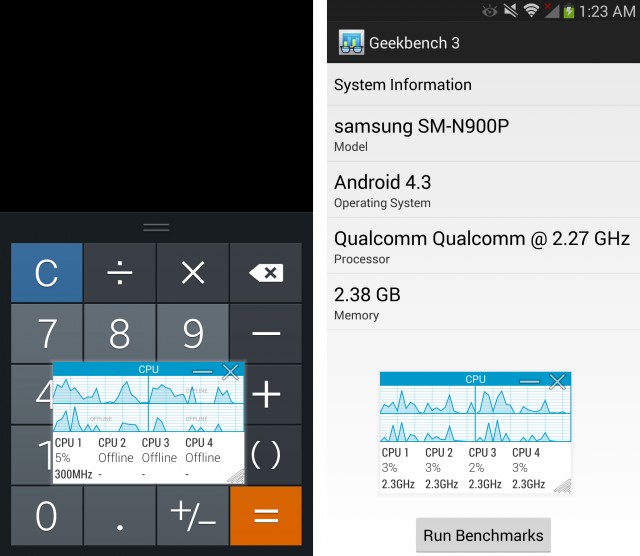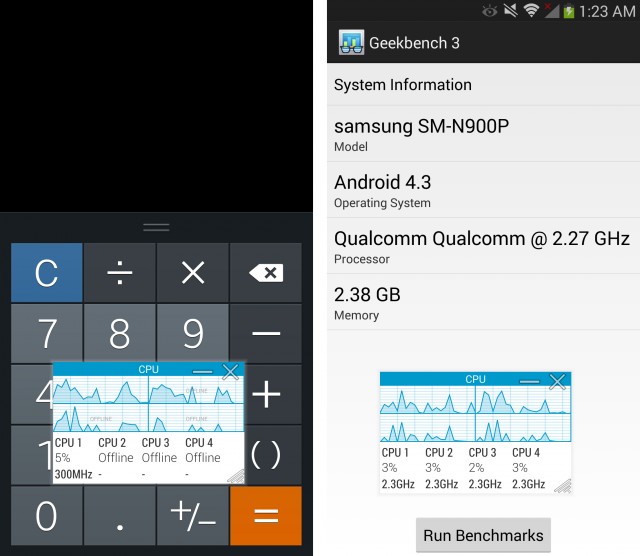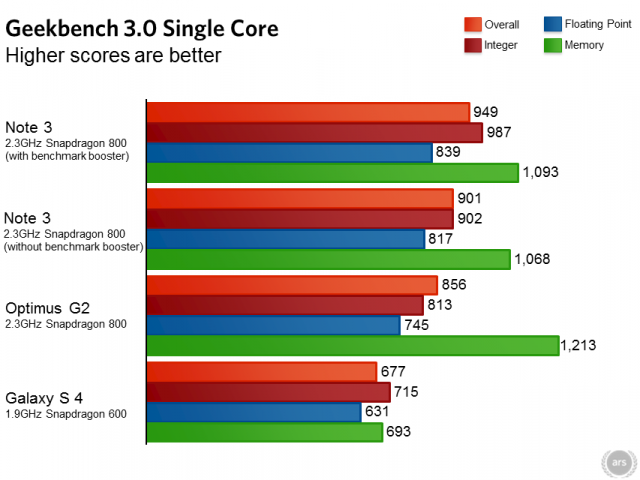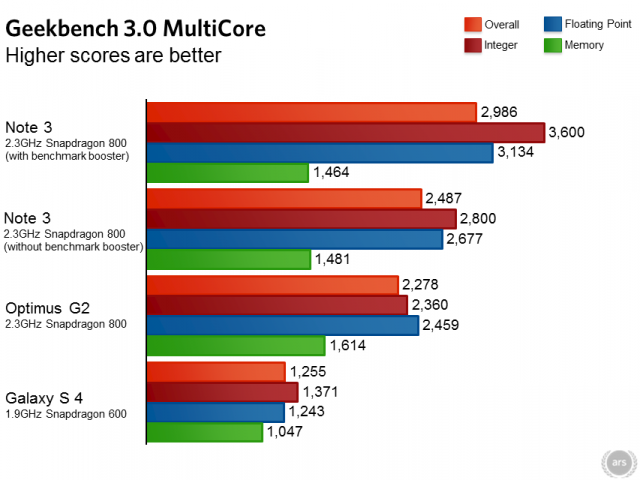 If it wasn’t enough for you to shake your head when Samsung artificially boosted Samsung Galaxy S4’s performance, well here’s another round for you. The Samsung Galaxy Note 3 was just release, with reviews coming out left and right, some technical folks have discovered something very interesting.
If it wasn’t enough for you to shake your head when Samsung artificially boosted Samsung Galaxy S4’s performance, well here’s another round for you. The Samsung Galaxy Note 3 was just release, with reviews coming out left and right, some technical folks have discovered something very interesting.
Ron Amadeo of Ars Technica has a few words to say. According to their report, much like with Samsung artificially boosting S4’s performance, the company did the same thing with the Note 3. In the US version of the phone, the company has a special mode inside the device which kicks in when running performance tests to give the device an upper hand.
Here is what he said:
After a good bit of sleuthing, we can confidently say that Samsung appears to be artificially boosting the US Note 3’s benchmark scores with a special, high-power CPU mode that kicks in when the device runs a large number of popular benchmarking apps. Samsung did something similar with the international Galaxy S 4’s GPU, but this is the first time we’ve seen the boost on a US device. We also found a way to disable this special CPU mode, so for the first time we can see just how much Samsung’s benchmark optimizations affect benchmark scores.
What happens here is that when you’re running any app on the device, such as a calculator or messaging, the device runs only one core. This helps to conserve battery power. The other cores only come forth when they are needed, depending on the need for more power, such as playing games. The other cores run at a low-power 300MHz state.
Now, when you load just about any benchmark app, all four cores kick in at the same time, clocked at 2.3 GHz. This is a ‘special’ mode that Samsung embedded into the Note 3, which allows the device to perform at its best, outside of ‘normal’ usage. The point of benchmark is to show what a device is capable of under normal usage conditions. It would certainly be different if Samsung ran all four cores at the same time at a certain clock speed, but this special mode is a way of throwing off the system, in other words, cheating.
Take a look at the images below (courtesy of Ars Technica) and let us know what you think.









